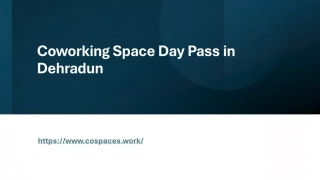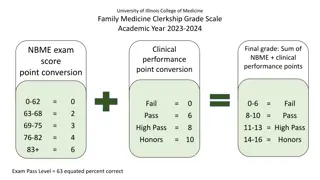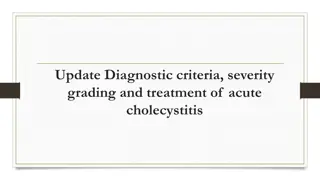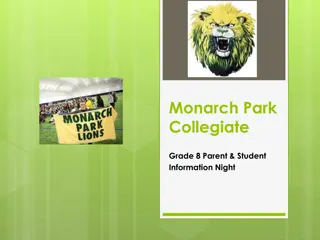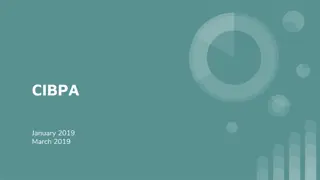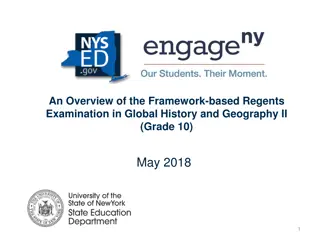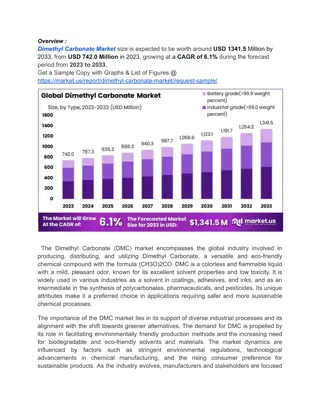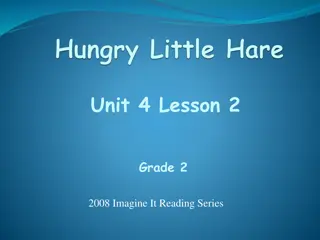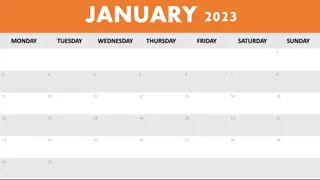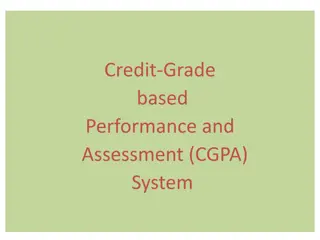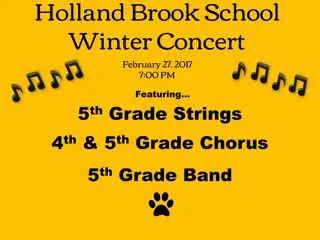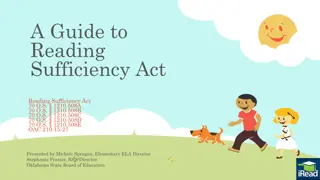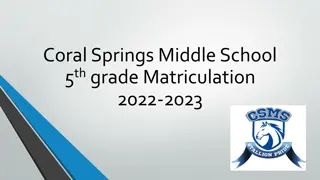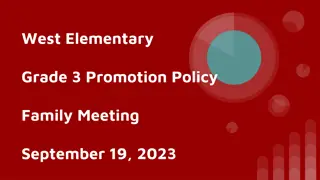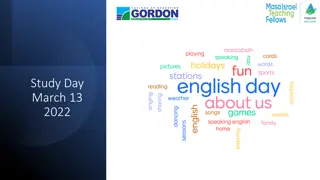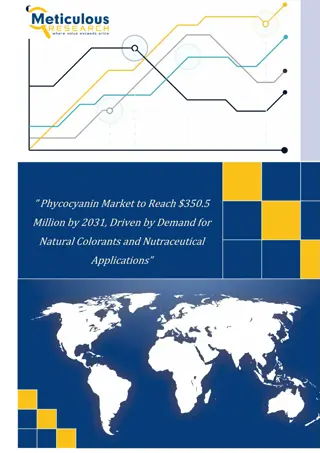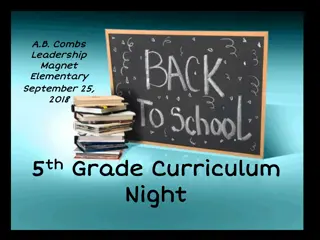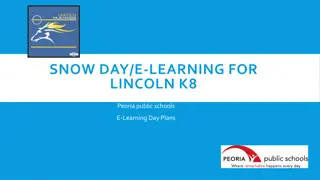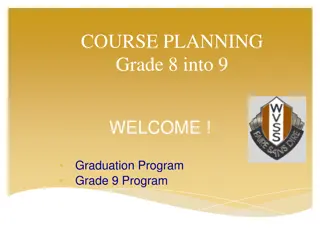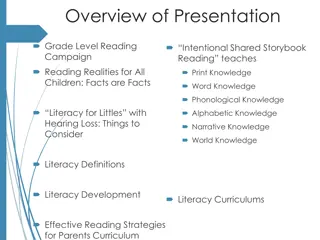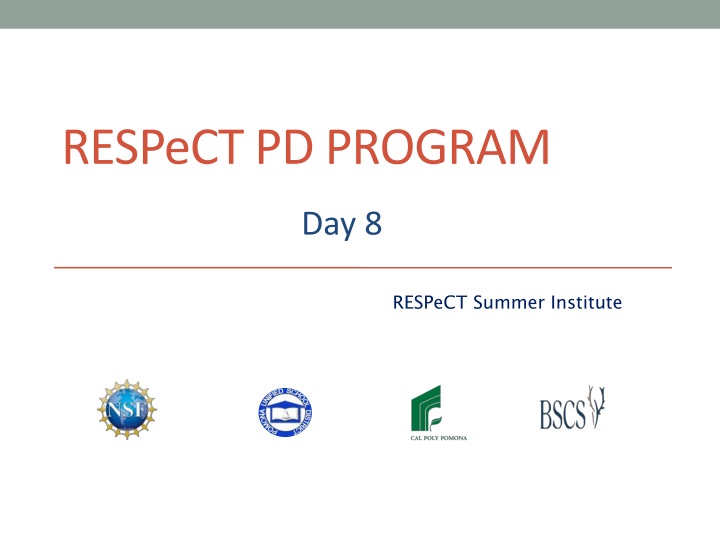
Enhancing Science Content Coherence through SCSL Strategies
Explore how to enhance science content coherence using SCSL strategies F, G, and H in the context of the RESPeCT Summer Institute. Discover the importance of explicit implementation and linking of science ideas to create a cohesive storyline for effective teaching and learning.
Download Presentation

Please find below an Image/Link to download the presentation.
The content on the website is provided AS IS for your information and personal use only. It may not be sold, licensed, or shared on other websites without obtaining consent from the author. If you encounter any issues during the download, it is possible that the publisher has removed the file from their server.
You are allowed to download the files provided on this website for personal or commercial use, subject to the condition that they are used lawfully. All files are the property of their respective owners.
The content on the website is provided AS IS for your information and personal use only. It may not be sold, licensed, or shared on other websites without obtaining consent from the author.
E N D
Presentation Transcript
RESPeCTPD PROGRAM Day 8 RESPeCT Summer Institute
Agenda for Day 8 Day-7 reflections Focus questions Introducing SCSL strategies F, G, and H Lesson analysis: SCSL strategies F, G, and H Food Webs lesson plan review Fall overview and study-group scheduling Lunch Content deepening: food webs Wrap-up and celebration!
Trends in Reflections Lesson Analysis Science Content Learning
Todays Focus Questions How can science content storyline coherence be enhanced by explicitly implementing STeLLA strategy F (Make explicit links between science ideas and activities), strategy G (Link science ideas to other science ideas), and strategy H (Highlight key science ideas and focus question throughout)? How will the Student Thinking Lens and Science Content Storyline Lens strategies help you teach the Food Webs lessons in the fall? An organism can use food molecules (1) for growth as they become part of its body; (2) for energy as the molecules are broken down; (3) as wastes; and (4) as matter passed on to other organisms. Why should these fractions of the food matter in an organism add up to 1? How can we use conservation of matter to create fraction problems with a scientific context?
Lesson Analysis: Focus Question 1 How can science content storyline coherence be enhanced by explicitly implementing STeLLA strategy F (Make explicit links between science ideas and activities), strategy G (Link science ideas to other science ideas), and strategy H (Highlight key science ideas and focus question throughout)?
SCSL Strategies F, G, and H: Purposes and Key Features Group 1: What are the purposes and key features of strategy F? Why is this strategy important for science content storyline coherence? Group 2: What are the purposes and key features of strategy G? Why is this strategy important for science content storyline coherence? Group 3: What are the purpose and key features of strategy H? Why is this strategy important for science content storyline coherence?
SCSL Strategies F, G, and H: Discussion Question What s similar and different about these three strategies?
Preparing for Video-based Lesson Analysis Read Analysis Guide F, part 1. 1. What is the difference between the main learning goal and supporting science ideas? 2. What is similar about the main learning goal and supporting science ideas?
Lesson Analysis: Strategy F 1. For each of the video clips, read the context at the top of the corresponding transcript and then watch the clip. 2. For each clip, use the criteria in part 2 of Analysis Guide F to analyze how well science ideas were linked to the activity. Link to video clips: 8.1_stella_FW_torres_L5_c1; 8.2_stella_FW_torres_L5_c2; 8.3_stella_FW_torres_L5_c3
Lesson Analysis: Strategies F, G, and H 1. Read the context of the video clip at the top of the transcript (handout 8.5). What evidence of your assigned strategy might you find in the video? 2. Watch the video clip. Link to video clip: 8.4_stella_FW_torres_L5_c4
Lesson Analysis: Strategies F, G, and H Strategy F: a. Find examples in the video transcript where students are linking science ideas to a lesson activity. b. Suggest one specific way to strengthen strategy F in this lesson. Strategy G: a. Find examples where two or more science ideas are being linked together. b. Suggest one specific way to strengthen strategy G in this lesson. Strategy H: a. Find an example where the teacher is highlighting key science ideas or referring back to the focus question. b. Suggest one specific way to strengthen strategy H in this lesson.
Summary: Strategies F, G, and H Use linking strategies to make the science ideas explicit to the whole class (strategies F and G). Engage students in linking science ideas to activities before, during, and after an activity (strategy F). Engage students in linking science ideas to other science ideas (strategy G). Highlight key science ideas throughout the lesson (strategy H). Keep returning to the focus question throughout and at the end of the lesson (strategy H).
Lesson Analysis: Focus Question 2 How will the Student Thinking Lens and Science Content Storyline Lens strategies help you teach the Food Webs lessons in the fall?
Food Webs Lesson Plan Conversation 1. The science content storyline across lessons Review the main learning goal for each lesson sequentially. 2. The science content storyline within lessons (5 7 min for each two-part lesson) How does this lesson fit into the arc of all the lessons? What are the main learning goal and focus question? Describe the main activity (or activities). How will the activity help students better understand the learning goal for the day? What STeLLA strategy/strategies are highlighted in this activity? What concerns or suggestions do you have about this activity? 3. Practical issues and questions
STL Strategies Highlighted in the Food Webs Lessons 1a 1b 2a 2b 3a 3b 4a 4b 5a 5b 6a 6b 7a 7b Lesson 1. Elicit 2. Probe 3. Challenge 4. Analyze/ Interpret 5. Explain/ Argue 6. Use/Apply 7. Synthesize/ Summarize
SCSL Strategies Highlighted in the Food Webs Lessons Lesson 1a 1b 2a 2b 3a 3b 4a 4b 5a 5b 6a 6b 7a 7b A. Identify Main Learning Goal B. Set Purpose and Focus Question C. Match Activity to MLG D. Match Content Reps to MLG F. Link Activity to Science Ideas G. Link Science Ideas H. Highlight Key Science Ideas and Focus Question I. Summarize Key Science Ideas
Overview of Study-Group Sessions 1. Purpose: To practice, analyze, and learn from the use of the STeLLA strategies in your science teaching. 2. Review the focus of each study-group session: What is the main focus for fall study-group sessions 1 3? What is the purpose of the 2-hour meeting in December/January? What is the main focus for spring study-group sessions 4 6?
Teaching the Food Webs Lessons 1. Before teaching lesson 1, give your students the classroom pretest. 2. Teach all the lessons and have one lesson video recorded. 3. Give your students the classroom posttest. 4. Hold on to your students pre-post tests! You ll analyze them in preparation for Study Group 3.
Scheduling School-Year Study Groups Proposed meeting day/time: Wednesdays 2:00 6:00 p.m. Meeting place: In our classrooms, rotating from school to school Possible dates for our study-group sessions: Study Group 1: [insert possible date] Study Group 2: [insert possible date] Study Group 3: [insert possible date] 2-hour meeting to review Water Cycle lessons: [insert possible date] Study Group 4: [insert possible date] Study Group 5: [insert possible date] Study Group 6: [insert possible date]
FOOD WEBS MATH CONTENT DEEPENING Grade 5
Content Deepening Focus Questions An organism can use food molecules (1) for growth as they become part of its body; (2) for energy as the molecules are broken down; (3) as wastes; and (4) as matter passed on to other organisms. Why should these fractions of food matter in an organism add up to 1? How can we use conservation of matter to create fraction problems with a scientific context?
Where Does the Matter Go? A Math Problem! 1/2 of the food matter became part of the plant so it could grow bigger. The fish ate 1/5 of the food matter. Photo courtesy of Pixabay.com 1/10 of the food matter ended up as wastes. 1/5 of the food matter was changed to CO2 and H2O when the plant broke it down to release stored energy. Photo courtesy of Pixabay.com How much of the food matter was used up and disappeared?
Content Deepening: Focus Question 1 An organism can use food molecules 1. for growth, 2. for energy, 3. as wastes, and 4. as matter passed on to other organisms. Why should these fractions of food matter in an organism add up to 1 (for any organism)?
Analyze Your Thinking When you found the sum 1 2+1 10+1 5+1 5=1 1. What were the steps of your calculations? Describe what you did in words. 2. What is the whole that each fraction represents part of? 3. What was the unit being added in the sum?
Representing Portions with Pie Charts Each of the fractions 1 is a unit fraction representing one specific portion of a whole. For each fraction, select the appropriate pie chart from the handout and cut out the portion of that whole represented by that fraction. Arrange the pieces to illustrate the equation. 2,1 5,and1 10 1 2 1 2+1 10+1 5+1 5=1
Representing Addition with Pie Charts Arrange the pieces to illustrate the equation 1 2+1 How can you use pie charts to illustrate the other steps in your calculation? 1 2 10+1 5+1 1 10 5=1. 1 5 1 5 1 2+1 10+1 5+1 5=5 10+1 10+2 10+2 10=10 10=1
Identifying the Unit 1 2+1 5 10+1 10+1 10+2 5+1 10+2 5 = 10 =(5)1 10+(1)1 10 +(2)1 1 10 10 +(2)1 10 = 5+1+2+2 1 10 10 = 10 10 = = 1
Identifying the Unit 1 2+1 5 10+1 10+1 10+2 5+1 10+2 Equivalent Part-Whole Relationships 5 Multiples of a Common Unit = 10 =(5)1 10+(1)1 10 +(2)1 1 10 10 +(2)1 Distributive Law 10 = 5+1+2+2 Total Units 1 10 10 10 Equivalent Part-Whole Relationships = 10 = = 1 The unit is one tenth of the whole.
Identifying the Unit 1 2+1 50 100+10 10+1 100+20 5+1 Equivalent Part-Whole Relationships 5 100+20 Multiples of a Common Unit = 100 1 1 1 1 =(50) 100+(10) 100 +(20) 1 100 100 100 100 +(20) Distributive Law 100 = 50+10+20+20 Total Units 1 Equivalent Part-Whole Relationships = 100 100 = = 1 The unit is one hundredth of the whole.
Identifying the Unit Equivalent Part- Whole Relationships 1 2+1 10+1 5+1 5 People have difficulty interpreting addition with rational numbers because different expressions can represent the same portion, and the unit being added is determined relative to the parts being added. 5 10+1 10+2 10+2 Multiples of a Common Unit = 10 =(5)1 10+(1)1 10 +(2)1 10 +(2)1 10 Distributive Law 1 10 = 5+1+2+2 Total Units 1 10 10 10 = 10 = = 1 Equivalent Part-Whole Relationships The unit is one tenth of the whole.
Where Does the Matter Go? A Math Problem! The fish used 1/4 of the food matter to grow bigger. The bear ate 1/2 of the food matter. Photo courtesy of Pixabay.com 1/8 of the food matter ended up as wastes. 2/16 of the food matter was changed to CO2 and H2O when the fish broke it down to release stored energy. Photo courtesy of Pixabay.com How much of the food matter was used up and disappeared?
Detecting an Error The fish used 1/3 of the food matter to grow bigger. The bear ate 3/7 of the food matter. Photo courtesy of Pixabay.com 1/6 of the food matter ended up as wastes. 1/7 of the food matter was changed to CO2 and H2O when the fish broke it down to release stored energy. Photo courtesy of Pixabay.com Question: These numbers are incorrect. Why?
Detecting an Error The sum of the supposed portions is greater than the whole. 3 7+1 7 3 7 1 3 3+1 6+1 1 6 =18 42+14 7 42=45 6 42= 13 42+ 42+ 1 7 42 The number of units being added exceeds the number available.
Reflect: Content Deepening Focus Question 1 An organism can use food molecules 1. for growth, 2. for energy, 3. as wastes, and 4. as matter passed on to other organisms. Why should these fractions of food matter in an organism add up to 1 (for any organism)?
Content Deepening: Focus Question 2 How can we use conservation of matter to create fraction problems with a scientific context?
A Fraction Problem 1/2 of the food matter became part of the plant so it could grow bigger. The fish ate 1/5 of the food matter. Photo courtesy of Pixabay.com ? of the food matter ended up as wastes. 1/5 of the food matter was changed to CO2 and H2O when the plant broke it down to release stored energy. Photo courtesy of Pixabay.com What portion of the food matter in the plant ended up as wastes?
Applying Conservation of Matter 1 2+1 5+1 5=5 10+2 10+2 10=9 There are only four ways the food matter in an organism is used. The portion lost to wastes must be what is left of the whole after taking away the other three portions. There is only one unit unaccounted for after summing the first three. 10 of the food mater was used for growth or broken down for energy or passed on to the fish. So 1 9 10=10 10 9 10=1 10 of the food matter must be lost to wastes.
Design Your Own Fraction Problem The fish used ? of the food matter to grow bigger. The bear ate ? of the food matter. Photo courtesy of Pixabay.com ? of the food matter ended up as wastes. ? of the food matter was changed to CO2 and H2O when the fish broke it down to release stored energy. Photo courtesy of Pixabay.com The unit is 1/14. What portion of the food matter in the fish ___________?
Reflect: Content Deepening Focus Question 2 How can we use conservation of matter to create fraction problems with a scientific context?
Todays Focus Questions How can science content storyline coherence be enhanced by explicitly implementing STeLLA strategy F (Make explicit links between science ideas and activities), strategy G (Link science ideas to other science ideas), and strategy H (Highlight key science ideas and focus question throughout)? How will the Student Thinking Lens and Science Content Storyline Lens strategies help you teach the Food Webs lessons in the fall? An organism can use food molecules (1) for growth as they become part of its body; (2) for energy as the molecules are broken down; (3) as wastes; and (4) as matter passed on to other organisms. Why should these fractions of the food matter in an organism add up to 1? How can we use conservation of matter to create fraction problems with a scientific context?
Summarizing Science Content Storyline Lens Strategies What does the organization of the summary chart in the STeLLA strategies booklet highlight about the Science Content Storyline Lens strategies? Do you want to make any revisions or additions to our chart on effective science teaching?
Lets Celebrate! Design your own end-of-program celebration and insert any comments or instructions here.
Thank You! Thank you for participating in the RESPeCT PD program!

